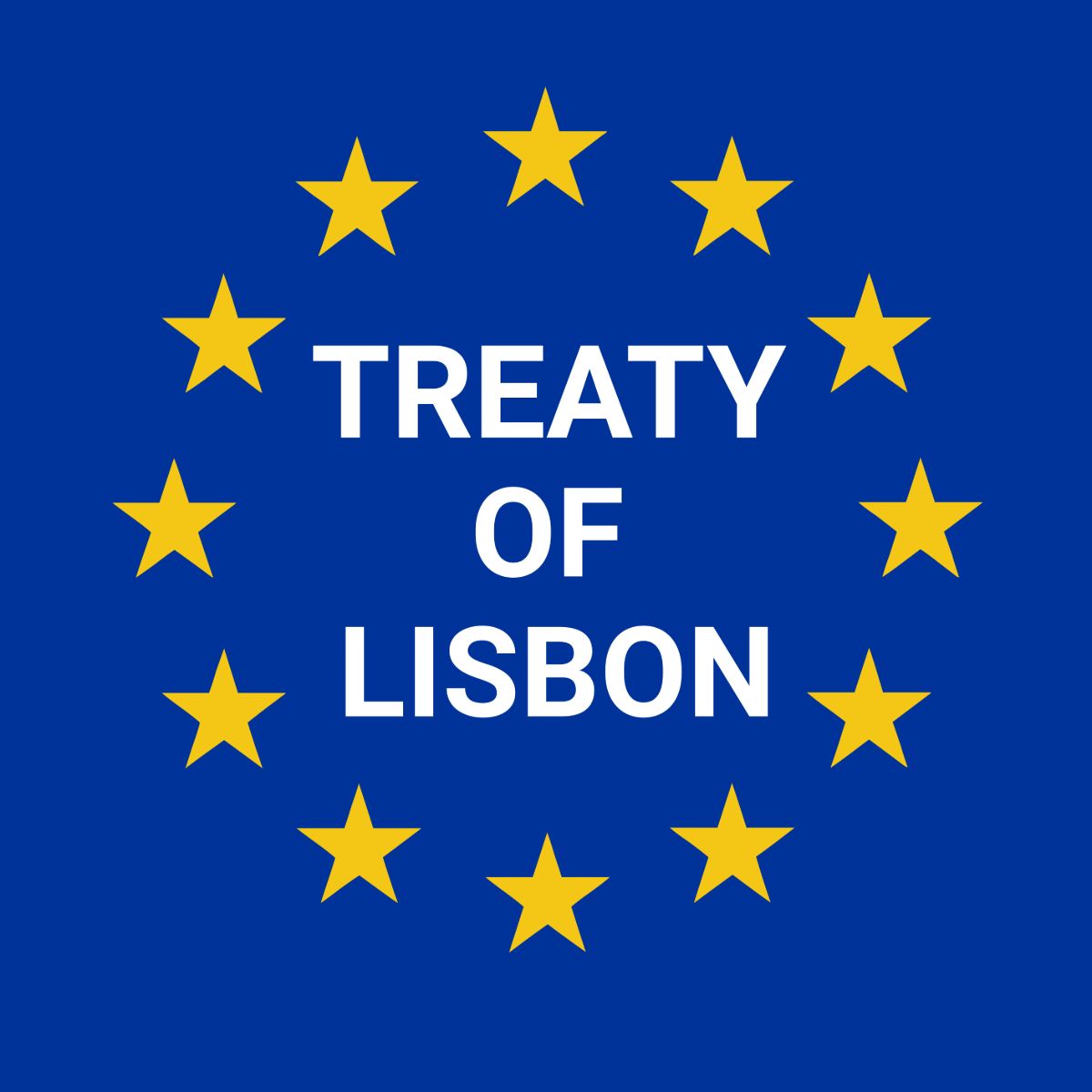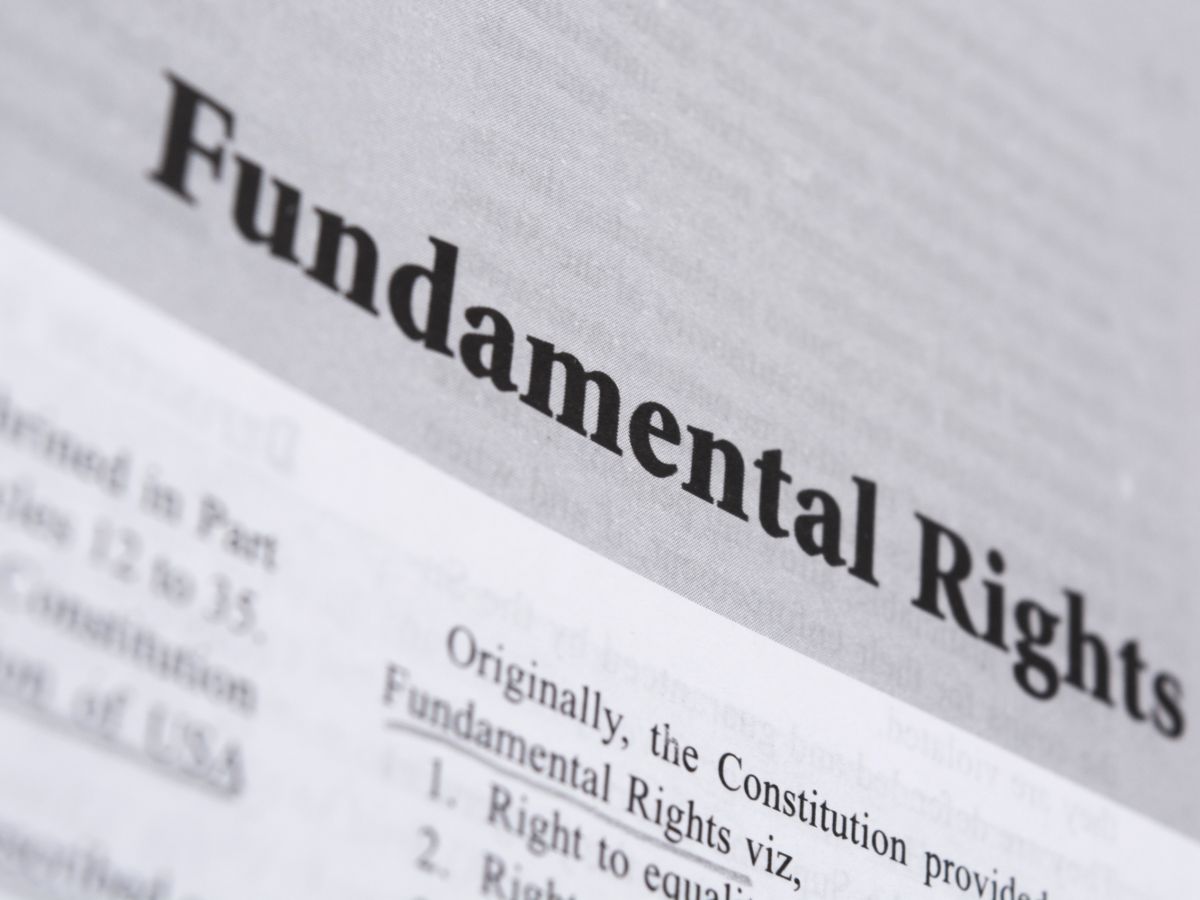
Those who are not regularly involved with the EU can perhaps be excused a degree of confusion when it comes to the names of the various treaties generated in the history of European integration. But the wood can be seen in spite of the trees: Today’s EU catchwords like “Treaty of Maastricht” (1991), “Treaty of Amsterdam” (1997), “Treaty of Nice“ (2001) and “Treaty of Lisbon“ (2007) are simply amendments adopted as further developments of the fundamental treaties of the EU, namely the EU Treaty and the EC Treaty. To that extent one is tempted to say that the constitutional development of the EU is something of a patchwork, the result of increasingly frequent attempts to adopt the EU system to changing circumstances. The Treaty of Lisbon seeks to eliminate one specific source of the resulting complexity: Co-operation in the field of criminal law is no longer assigned to the Third Pillar with its special regime (→ Xenophobia) but is subject to the rules of procedure of the Single Market (First Pillar). For our subject, this means that decisions in the field of criminal law, which is of relevance for human rights, now no longer presuppose unanimity in the Council. They also require the approval of the European Parliament and fall within the competence of the European Court of Justice in Luxembourg.
The complex genesis of the Treaty of Lisbon

Photo: Adobe Stock/Ricochet64
In a departure from the usual policy of small steps, the leaders of the EU decided at the beginning of the new millennium that it was time for a great leap forward in the form of a new overall treaty – a “treaty establishing a constitution of Europe” – to replace all the earlier treaties. Under the influence of the history of the USA, a Constitutional Convention was convened, which developed a constitution for Europe between February 2002 and July 2003. One interesting detail of the process is the fact that this was the first time an EU treaty was not created by the heads of state and government of the EU Member States (working in camera and unhindered by parliamentary involvement). After the draft constitution had been unveiled in July 2003, it had to be approved by the heads of state and government. That was no easy task and – not surprisingly – a number of changes had to be made to the draft for it to receive the blessing of the (many) men and (few) women in charge of the various public administrations who watch Argus-eyed over the interests of their individual states. Once it had been signed in October 2004, the Constitutional Treaty – like any other amendment to the EU Treaty – had to be ratified at the national level in all the (then 25) Member States in accordance with the provisions of their respective constitutions. With the negative results of the referenda held in France and the Netherlands in the summer of 2005, this hurdle in the acceptance procedure proved too high, and the new EU constitution was dead before it saw the light of legal effect.
The following two years in the constitutional history of Europe are officially classified as a pause for thought, although critics saw it more as a pause from thought. It was not until the summer of 2007, during the German Presidency, that a new way forward was found. The Intergovernmental Conference (i.e. the heads of state and government of the Union) was mandated to negotiate a new treaty which was, as far as possible, to be a replica of the failed draft constitution. The result of that negotiation process is the Treaty of Lisbon, which was signed in December 2007. In terms of content it is a 90 percent copy of the failed EU constitution but it is formulated without any constitutional pathos, this underscoring the fact that the Member States remain the “Masters of the Treaties”. Following the positive result of the (second) referendum held in Ireland and the signing of the document by the Czech President Klaus (→ Zero Tolerance), the Treaty of Lisbon entered into force at the end of 2009.
The new treaty brought a number of significant changes with regard to the protection of human and minority rights including the fact that the EU as a whole could now become a party to the Council of Europe’s European Convention on Human Rights (ECHR). This was the first time the European Union had accepted any form of external control, namely by the European Court of Human Rights in Strasbourg (Article 6 paragraph 2 of the EU Treaty). And that is just one side of the twin strategy of Lisbon: In addition to being a party to the ECHR, the EU was also given its very own Charter of Fundamental Rights.
The heady Charter of Fundamental Rights

Photo: Adobe Stock/Lakshmiprasad
Like the draft constitution, the Charter of Fundamental Rights was also drawn up in a convention, which was chaired by the former German President Roman Herzog and worked from December 1999 to October 2000. The Charter was signed by representatives of the Portuguese EU Presidency and the Presidents of the EU Commission and Parliament at a formal ceremony held in December 2000. As Part II of the Constitutional Treaty, the Charter was an integral part of the constitution project. When that ground to a halt in the summer of 2005, hopes of a legally binding EU Charter of Fundamental Rights had to be temporarily abandoned, too, but they revived with the signing of the Treaty of Lisbon at the end of 2007. In order to avoid all constitutional pathos, the Lisbon Treaty does not include the Charter but only makes apologetic reference to it as a separate document. Juridically speaking, this makes no difference as it is explicitly stated that the Charter has the same legal force as the Treaty itself (see Art. 6 para. 1 of the EU Treaty). The Charter was accordingly proclaimed with some minor changes in December 2007 and entered into law at the same time as the Treaty of Lisbon. Previously the EU’s Court in Luxembourg had based its decisions on the provisions of the Council of Europe’s ECHR and developed corresponding fundamental EU rights in its case law (→ Judiciary), but now the EU, for the first time ever, had its own written catalogue of fundamental rights.
The Charter comprises seven chapters, which address the following items: dignity (Articles 1-5 on human dignity, the right to life and integrity of the person, prohibition of torture, prohibition of forced labour); freedoms (Articles 6-19 on respect for private and family life, protection of personal data, the right to found a family, freedom of thought, conscience and religion, freedom of expression and information, freedom of assembly and association, freedom of the arts and sciences, the right to education, freedom to choose an occupation and the right to engage in work, freedom to conduct a business, the right to property, the right to asylum, protection in the event of removal, expulsion or extradition); equality (Articles 20-26 on equality before the law, non-discrimination, diversity, equality between men and women, the rights of the child, the rights of the elderly, integration of persons with disabilities); solidarity (Articles 27-38 on the workers’ right to information and consultation within the undertaking, the right of collective action, the right of access to placement services, protection in the event of unjustified dismissal, fair and just working conditions, prohibition of child labour and protection of young people at work, compatibility of family and working life, social security and social assistance, health care, access to services of general economic interest, environmental protection, consumer protection); citizens’ rights (Articles 39-46 on the right to vote and stand as a candidate at elections to the European Parliament and at municipal elections, the right to good administration, the right of access to documents, the European Ombudsman, the right to petition, freedom of movement and residence, diplomatic and consular protection), and justice (Articles 47-50 on the right to an effective remedy and fair trial, presumption of innocence and the right of defence, principles of legality and proportionality for criminal offences and penalties, the right not to be tried or punished twice for the same criminal offence). Following the treatment of all these items relating to dignity, freedoms, equality, solidarity, citizens’ rights and justice, the last chapter comprises four general provisions that are basic to interpretation of the Charter.
Although the assessment of the Charter has been clearly positive in both academic and political circles, it must be said that it often appears overladen with content and in some cases – naturally enough – is the victim of compromise formulations. With regard to citizen’s entitlements in the fields of education, employee rights and social security, the Charter reflects the distribution of competence between the EU and the Member States with a trying number of references to “national law and practices”. That has considerable potential for disappointment and frustration. The greatest achievement of the Charter is doubtless the fact that it brings together citizens’ fundamental rights in a single high-profile document, thus making them clearer and more visible. The primary objective of the Charter is to reiterate the rights that derive from the constitutional traditions common to EU countries and from Member States’ international obligations, especially with reference to the ECHR.
First minority protection clause in an EU treaty
A number of delegates, especially from Hungary, Germany and Austria argued for a minority protection clause to be included in the Charter of Fundamental Rights, but a Europe-wide consensus on the subject was not forthcoming. The result of their endeavours was accordingly weak: a vague diversity clause in Article 22 of the Charter to the effect that the Union “shall respect cultural, religious and linguistic diversity”. Only those who are familiar with the genesis of the Charter will see a minority protection clause in this formulation; the text itself speaks only of “diversity”, and that can refer to diversity within the states (protection of endangered cultures, religions and lesser used languages) as well as to diversity between the states (protection of national cultures, or the official religion or language of a state). Moreover, the Union merely has to respect diversity. Such a general diversity clause cannot be deemed to establish a specific duty of promotion nor any enforceable individual rights, not to mention group rights (→ Yin and Yang). What the Charter does contain, however, is a ban on discrimination on the basis of “membership of a national minority” (Article 21 of the Charter). The term “national minority” has thus become part of EU terminology and as such can be interpreted by the European Court of Justice.
It is equally remarkable that the EU Treaty itself now makes explicit reference to minorities: Respect for human rights “including the rights of persons belonging to minorities” is one of the values on which the Union is founded (Article 2 of the EU Treaty). In comparison with the Charter, the term “minorities” is more general in the EU Treaty, but that is not to say that national minorities are not covered as well. Even though the Treaty of Lisbon does not confer any additional authority on the EU to define standards of minority protection, the new EU Treaty does make it clear that minority protection is a value that is common to the Member States and the Union itself. With regard to the “Treaty on the Functioning of the European Union” (which corresponds to the earlier EC Treaty), the Treaty of Lisbon added a new provision obliging the European Union, “in defining and implementing its policies and activities” (i.e. in all its functions) to work “to combat discrimination based on sex, racial or ethnic origin, religion or belief, disability, age or sexual orientation” (Article 10 of the Treaty on the Functioning of the EU). The active avoidance and prevention of discrimination has thus become a permanent focus of EU policy to which due consideration must be given in Brussels in all contexts and at all times. And what can we conclude from that?
For decades the European Parliament has worked to have minority protection enshrined in the EU Treaties. There was a growing feeling at the political level that the EU’s commitment to minorities abroad and its determination to ignore the subject in its own Member States was an embarrassing case of double standards (→ Organisations). This may help explain why the Italian EU Presidency was successful with a proposal suddenly introduced in November 2003 to incorporate the dreaded word “minorities” in EU treaty law, although diplomatic finesse was doubtless also involved. The amendment proposed to include in Article 2 of the EU Treaty not only respect for “the rights of persons belonging to minorities” but also the principle of “equality between women and men”. Perhaps it was this clever combination of a political bogey (minorities) with a political soft-sell item (gender equality) that brought the breakthrough. Of course, a value anchored at the level of the constitution is not something that immediately changes the situation of minorities in Europe. Nevertheless, the changes introduced by the Treaty of Lisbon provide a useful basis – especially when viewed in combination with other recent developments at EU level like the EU Agency for Fundamental Rights established in 2007, the method of open co-ordination, other fields of policy supportive of members of minorities (→ Organisations), and the designation of a member of the European Commission specifically responsible for the protection of fundamental rights. At all events, at the level of the EU Treaties at least, the long silence on the subject of minority protection in the EU has definitely been broken.
Two take aways:
- The Treaty of Lisbon is the latest amendment to the EU treaties. It was signed by all 27 Member States on 13 December 2007 and entered into force on 1 December 2009. The Treaty of Lisbon is the equivalent of the constitution of the EU. Previously the EU was not a party to the ECHR nor did it have a binding catalogue of fundamental rights of its own. That changed in both cases with the coming into force of the Treaty of Lisbon, which was accompanied by the EU Charter of Fundamental Rights.
- In accordance with the Charter, the EU now has a duty to “respect cultural, religious and linguistic diversity”. In addition, discrimination on the basis of “membership of a national minority” is prohibited. The Treaty of Lisbon also makes protection for “persons belonging to minorities” a constitutional requirement of the EU. This means that the term “minority” is now a legal concept within the EU. To that extent the Treaty of Lisbon provides legitimation for the protection of the rights of persons belonging to minorities.
